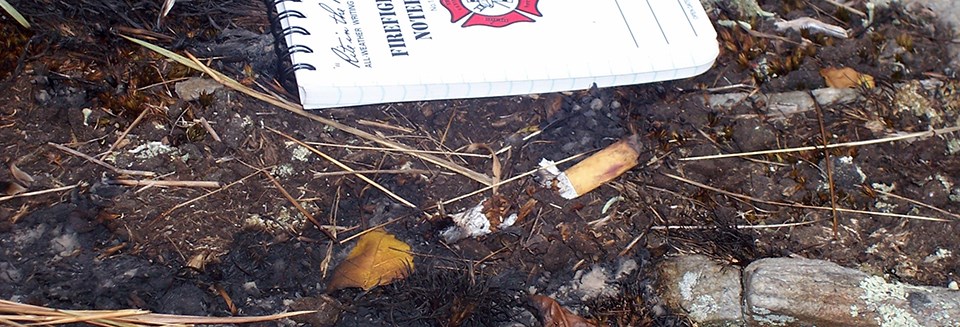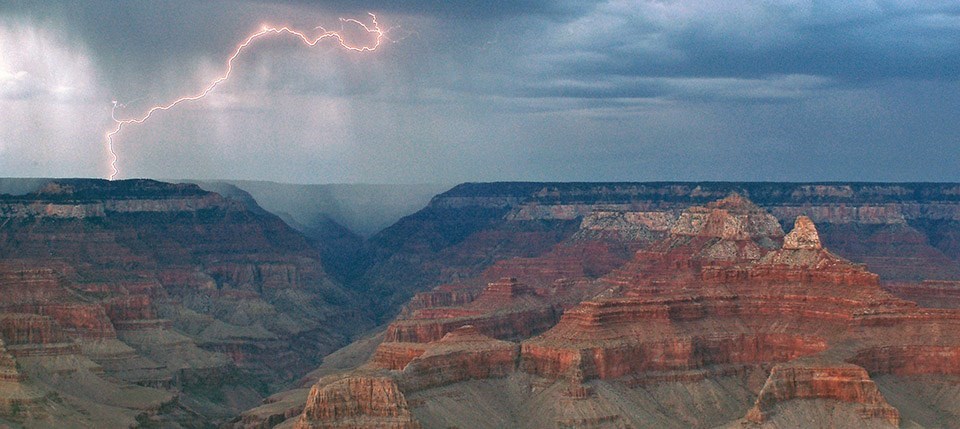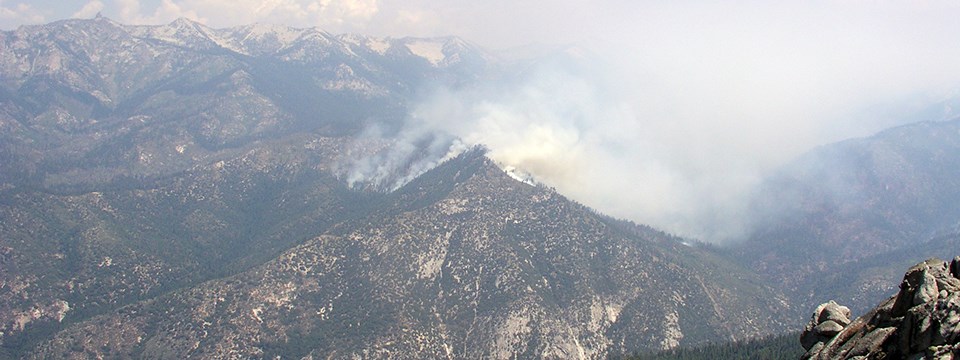Article
Wildfire Causes and Evaluations

NPS
Humans and Wildfire
Nearly 85 percent* of wildland fires in the United States are caused by humans. Human-caused fires result from campfires left unattended, the burning of debris, equipment use and malfunctions, negligently discarded cigarettes, and intentional acts of arson.
*Source: 2000-2017 data based on Wildland Fire Management Information (WFMI) and U.S. Forest Service Research Data Archive

Nature and Wildfire
Lightning is described as having two components—leaders and strokes. The leader is the probing feeler sent from the cloud. The return streaks of light are a series of strokes that produce the actual lightning bolt or flash that we see.
There are two types of lightning—cold lightning and hot lightning. Cold lightning is a return stroke with intense electrical current but of relatively short duration. Hot lightning has currents with less voltage, but these occur for a longer period of time. Fires are usually started by unusually long-lasting hot lightning bolts.

NPS
Evaluation of Wildland Fires
Wildland fire managers must constantly assess the threat of human-caused fire to wildlands and the threat of wildland fires to humans.
When wildfires begin, two major questions are asked:
- Does the wildfire threaten people and/or their personal property?
- Where is the wildfire located—in a forest or grassland, or in a human-dominated landscape?
Where people and property are threatened, all efforts are made to extinguish the fire. In some locations, such as large national parks and forests and where the wildfire is started by lightning, a natural fire may be permitted to burn its course to benefit the ecosystem. In these cases, natural barriers may contain a fire to within a specific area.
Wildfire investigators seek to understand the cause so agencies can prepare and implement prevention strategies. By understanding wildfire, managers can better plan for potential desirable and undesirable effects of wildfires. Although managers can be prepared, they cannot predict when or where fires are going to occur. Learn more about common wildfire causes and how they start.
